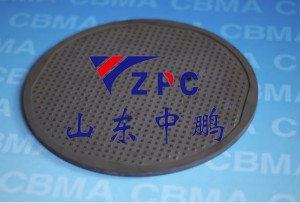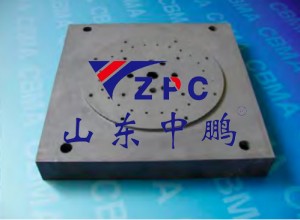In the clean room of the semiconductor factory, black wafers shining with metallic luster are being precision processed one by one; In the combustion chamber of the spacecraft engine, a special ceramic component is undergoing a 2000 ℃ flame baptism. Behind these scenes, there is an active material called “industrial black gemstone” – silicon carbide ceramics.
This superhard material, second only to diamond in hardness, is quietly rewriting the rules of high-end manufacturing. It can withstand the strong radiation of nuclear reactors, quickly transmit the surging electrical energy of new energy vehicles, and become the core heat dissipation material of 5G base stations. But behind such excellent performance, there is an undeniable challenge: how to tame this “unruly” material?
Material properties determine processing challenges
The processing difficulty of silicon carbide is like carving patterns on glass. Its hardness is 3-5 times that of ordinary ceramics. Conventional cutting tools are like carving steel plates with chalk, which not only has low efficiency but also easily cracks the machined surface. What’s even more tricky is that this material has obvious brittleness, and a slight mistake can break it like a biscuit, especially for precision parts with a thickness of less than 1 millimeter, the processing process can be described as dancing on steel wire.
The Breakthrough Path of Modern Manufacturing
Faced with these challenges, engineers have developed three major “methods of taming materials”:
1. Mold shaping technology – a hot pressing process similar to making mooncakes, which allows silicon carbide powder to “obediently conform” under high temperature and pressure, making it particularly suitable for manufacturing standardized industrial cutting tools. This technology is like putting mold shackles on materials, shaping regular geometric shapes under precise temperature control.

2. Fluid carving method – using injection molding technology, the material slurry is injected into the mold like chocolate sauce, and through precise control of the flow trajectory, complex hollow structures are shaped. This method makes it possible to manufacture irregular nozzles for satellite thrusters.
3. Powder reconstruction technology – using powder metallurgy technology to reconstruct the microstructure of materials like building blocks, creating nuclear reactor seals that combine strength and precision. This process allows materials to undergo a “transformation” at the molecular level, achieving targeted improvement in performance.
Key details of precision machining
To master this material, not only advanced equipment is needed, but also three golden rules must be grasped: precise mold design, meticulous process monitoring, and rigorous material pretreatment. Shandong Zhongpeng strictly follows these three rules in the production process, striving for quality and quantity assurance. It not only requires an increase in finished product rate, but also demands that the finished products strictly meet customer needs.
Currently, with the application of new technologies such as laser processing and ultrasonic assisted cutting, silicon carbide ceramics are breaking through the final processing barriers. These breakthroughs not only allow “black gemstones” to truly move towards industrialization, but also indicate the arrival of a new round of material revolution.
For manufacturing companies seeking technological breakthroughs, silicon carbide processing is both a challenge and an opportunity. Choosing processing partners with rich experience and innovative processes will become the golden key to opening the door to high-end manufacturing. This material, once considered a ‘processing bottleneck’, is waiting for more heroes to uncover its ultimate mystery.
Post time: Apr-07-2025
